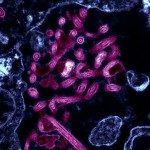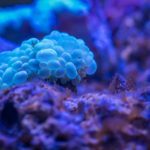Présentation
(Last update: 10/10/2023)
Context
In early 2020, the first French death attributed to the SARS-CoV-2 virus was a teacher from Crépy-en-Valois, a city north of Paris. The intense circulation of the novel coronavirus in that area was confirmed by sero-epidemiological studies conducted by the Institut Pasteur among pupils, their families, teachers and non-teaching staffs (Fontanet et al.). Intense SARS-CoV-2 circulation during that period was also identified within the Crépy-en-Valois local hospital and nursing homes by diagnostic campaigns conducted by the Amiens hospital among residents and staffs (unpublished data).
Aim
The COVID-Oise project constituted a unique opportunity to follow a general population cohort within an area that was one of the first affected in Europe in early 2020, in order to better characterize the immunity specific to the SARS-CoV-2 virus. The nature and duration of this immunity, whether acquired following natural infection and/or vaccination, in the context of emerging variants of the virus, and the long-term consequences of the post-COVID syndrome (also called long COVID) are key elements of the COVID-19 research.
Design
The COVID-Oise cohort is constituted by participants across all age categories starting from 5 years-old, focusing on benign and asymptomatic COVID-19 forms that represent most of the clinical cases. Over a 2-year period, two sessions per year have ben organized for clinico-epidemiological data collection and biological sampling. The last session took place in April 2022.
Status
- 905 participants were enrolled in the COVID-Oise cohort, including 723 among families from the Crépy-en-Valois area, 107 staff members and 75 residents from the local hospital and nursing homes.
- 64.6% of the participants also participated in the initial studies conducted by Institut Pasteur or the Amiens hospital in early 2020, allowing for a follow-up since the beginning of the pandemic for almost two thirds of the COVID-Oise participants.
- 61.2% of the participants were infected at least once by the SARS-CoV-2 between January 2020 and the end of their follow-up within the study.
- After the last session in April 2022, SARS-CoV-2 specific antibodies were detectable in 96.2% of the collected blood samples, attesting for past infection(s) and/or vaccination(s) for almost all the study population.
Several analyses were run on the collected samples to study the humoral response following infection and/or vaccination. Research continues with a focus on additional topics, including characterization of some aspects of the SARS-CoV-2 specific cellular responses, immunity in the nasopharyngeal mucosa, and post-COVID syndrome.
Results (from the initial studies conducted in early 2020, and from the COVID-Oise cohort)
– At a time when serological tests were not yet commercialized, serological assays to detect SARS-CoV-2 specific antibodies were established by several teams within the Institut Pasteur based on sera from infected individuals from Crépy-en-Valois (Grzelak 2020).
– These serological assays allowed to describe the early SARS-CoV-2 circulation within the high school an dprimary schools of Crépy-en-Valois. In April 2020, approximately 40% of high school students and teachers had been already infected by the emerging virus, with transmission occurring within their households (10% of parents and 12% of brothers and sisters of the high school students were seropositive). In primary schools, 23% of pupils in classes where the virus circulated with symptomatic children were seropositive, while 6% only were seropositive in classes where no symptoms were reported (Fontanet 2021).
– Anosmia and agueusia were identifed as predictive factors for COVID-19 early in the pandemic. These symptoms were particulary reported by women aged between 18 and 44 years old, and were associated with headaches and fatigue (Galmiche 2021).
– In-depth analysis of antibody functions in sera from infected individuals showed that asymptomatic SARS-CoV-2 infection elicits polyfunctional antibodies neutralizing the virus and targeting infected cells through complement deposition and antibody-dependent cellular toxicity, but to a lower degree than symptomatic infection (Dufloo 2021).
– Quantitative measurements of antibodies of different isotypes against several SARS-CoV-2 antigens within sera of infected individuals allowed accurate classification of time since infection into intervals of 0-3 months, 3-6 months, 6-12 months using machine learning algorithms. The ensuing computational method could be used to reconstruct past SARS-CoV-2 transmission when applied to samples from a single cross-sectional sero-prevalence survey (Pelleau 2021).
– A focus on the nursing home residents who had received three doses of COVID-19 vaccine by the end of 2021 showed that this population at particular risk of severe forms of COVID-19 had developped antibodies capable of neutralizing the BA.1 Omicron variant of SARS-CoV-2. Nevertheless, some breakthrough infections were reported later on during the first Omicron wave in early 2022, arguing in favor of a fourth vaccine dose for the elderly (Bruel 2022).
– The COVID-Oise cohort allowed for the description of the sero-epidemiology of seasonal coronaviruses that are responsible for recurrent diseases in children each year (De Thoisy 2023).
– Protection against COVID-19 at the population-level was estimated by applying mathematical models on total SARS-CoV-2 antibody levels measured by serological tests. This methods could allow for identification of subgroups of individuals under-protected who would benefit from a vaccine booster dose (Woudenberg 2023).
Partners
Institut Pasteur: Medical Research Direction ; Clinical Research Coordination Office ; Clinical investigation and biological resources platforms ; numerous research units (see References).
CHU Amiens: Biology-pharmacy department
References
– Grzelak L, et al. A comparison of four serological assays for detecting anti-SARS-CoV-2 antibodies in human serum samples from different populations. Sci Transl Med. 2020 Sep 2;12(559):eabc3103. doi: 10.1126/scitranslmed.abc3103. Epub 2020 Aug 17. PMID: 32817357; PMCID: PMC7665313.
– Fontanet A, et al. SARS-CoV-2 infection in schools in a northern French city: a retrospective serological cohort study in an area of high transmission, France, January to April 2020. Euro Surveill. 2021 Apr;26(15). doi: 10.2807/1560-7917.ES.2021.26.15.2001695. PMID: 33860747.
– Galmiche S, et al. Characteristics Associated with Olfactory and Taste Disorders in COVID-19. Neuroepidemiology. 2021;55(5):381-386. doi: 10.1159/000517066. Epub 2021 Jul 1. PMID: 34198303; PMCID: PMC8339025.
– Dufloo J, et al. Asymptomatic and symptomatic SARS-CoV-2 infections elicit polyfunctional antibodies. Cell Rep Med. 2021 May 18;2(5):100275. doi: 10.1016/j.xcrm.2021.100275. Epub 2021 Apr 20. PMID: 33899033; PMCID: PMC8057765.
– Pelleau S, et al. Kinetics of the Severe Acute Respiratory Syndrome Coronavirus 2 Antibody Response and Serological Estimation of Time Since Infection. J Infect Dis. 2021 Nov 16;224(9):1489-1499. doi: 10.1093/infdis/jiab375. PMID: 34282461; PMCID: PMC8420633.
– Bruel T, et al. Neutralising antibody responses to SARS-CoV-2 omicron among elderly nursing home residents following a booster dose of BNT162b2 vaccine: A community-based, prospective, longitudinal cohort study. EClinicalMedicine. 2022 Jul 22;51:101576. doi: 10.1016/j.eclinm.2022.101576. PMID: 35891947; PMCID: PMC9307278.
– De Thoisy A, et al. Seroepidemiology of the Seasonal Human Coronaviruses NL63, 229E, OC43 and HKU1 in France. Open Forum Infect Dis. 2023 Jul 3;10(7):ofad340. doi: 10.1093/ofid/ofad340. PMID: 37496603; PMCID: PMC10368309.
– Woudenberg T, et al. Estimated protection against COVID-19 based on predicted neutralisation titres from multiple antibody measurements in a longitudinal cohort, France, April 2020 to November 2021. Euro Surveill. 2023 Jun;28(25):2200681. doi: 10.2807/1560-7917.ES.2023.28.25.2200681. PMID: 37347417; PMCID: PMC10288827.






